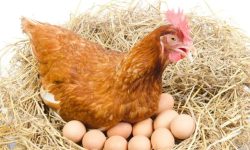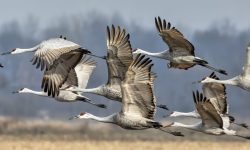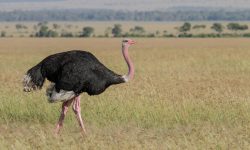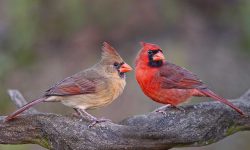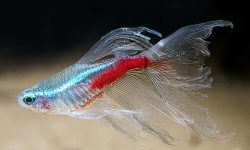Turkeys are often associated with festive dinners and the wild forests of North America, but have you ever stopped to wonder what a group of turkeys is called? It might seem like a trivial question at first glance, but it opens the door to a world full of fascinating insights into turkey behavior, biology, and culture. Whether you’re a birdwatcher, a trivia enthusiast, or simply curious, this article will take you on a fun and informative journey into the world of turkeys.
In this article, we’ll explore the answer to the question “What is a group of turkeys called?”, along with many interesting facts about their social structure, vocalizations, habits, and role in history and culture.
What Is a Group of Turkeys Called?
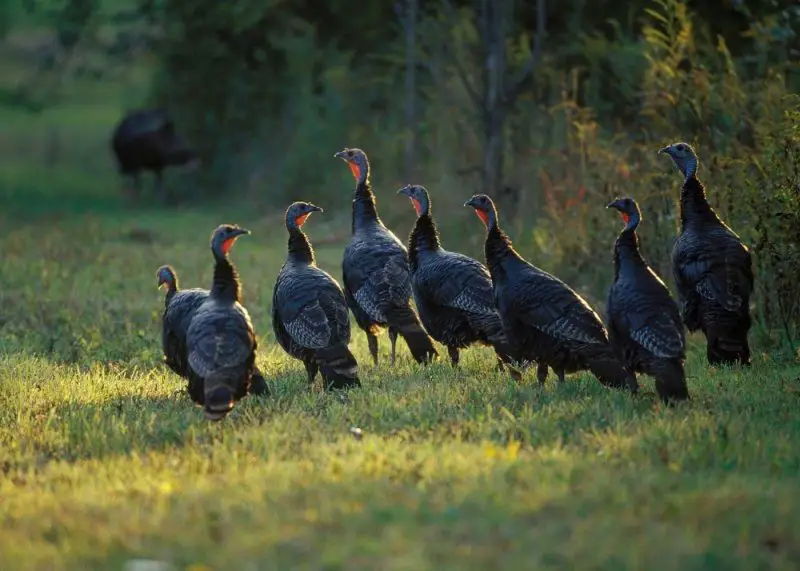
The Correct Term: Rafter
When discussing collective nouns for animals, the term used for turkeys often surprises people. Rather than calling them a flock, the correct and traditional term for a group of turkeys is a rafter. This word might sound unusual, especially since it typically brings to mind the wooden beams that support the ceiling of a house. However, in the context of turkeys, “rafter” has been used for centuries as the formal term to describe a group of these birds.
The origin of this expression lies in old English hunting and farming traditions. In medieval times, it was fashionable among the upper class and hunters to use distinctive names for groups of animals, a practice known as “terms of venery.” These poetic and often whimsical labels were seen as marks of refinement and education. “Rafter” was assigned to turkeys, and while no one knows for sure why, some believe it may be linked to the birds’ habit of roosting high up in trees or even on barn rafters when domesticated. Over time, this term was preserved in literary and agricultural references, even if it fell out of regular use among the general public.
Today, the word rafter remains the most accurate collective noun for turkeys, especially in ornithological or traditional writing. Though it may not appear frequently in casual conversations, it holds an important place in the history of animal classification and language.
Common Alternatives You Might Hear
Although rafter is the correct term, many people are more familiar with the word flock when referring to a group of turkeys. This is understandable, as flock is a general term widely used for many bird species. It’s simpler, more intuitive, and has become the standard in everyday language. Even wildlife enthusiasts and backyard birdwatchers commonly use flock when describing turkeys moving or foraging together.
In some cases, people even get a bit creative with the language, using playful or informal expressions like gang or gobble to describe turkey groups. These terms are more humorous than accurate, often inspired by the birds’ quirky behavior or their signature vocalizations. While these nicknames may appear in conversations, social media, or even novelty gift items, they are not considered scientifically valid terms.
Despite the growing popularity of these informal names, rafter remains the term with historical and linguistic roots. Using it not only brings precision to your language but also connects you to a long-standing tradition of observing and classifying wildlife with care and creativity. So, whether you’re a writer, teacher, nature lover, or trivia buff, knowing this term gives you a richer understanding of turkeys and the fascinating language we’ve built around them.
Why Are They Called a Rafter?
Historical Origins of Animal Group Names
The naming of animal groups has a curious and poetic history that dates back to medieval England. During this era, it became fashionable among the nobility and hunting classes to invent and use distinctive terms for groups of animals. Known as “terms of venery,” these names were often memorized and recited at social gatherings, hunting expeditions, or literary salons as a way to showcase education and refinement. This tradition produced some of the most imaginative collective nouns still used today, such as a murder of crows, a parliament of owls, and a pride of lions.
It was within this same context that the phrase “a rafter of turkeys” likely came into use. While it might not be as widely recognized today, it follows the same whimsical and poetic pattern that characterized other terms of the time. Many of these names were based on either the behavior of the animals or were simply fanciful inventions meant to entertain and impress peers. The idea of applying artistic language to wildlife gave even ordinary creatures a sense of charm and nobility.
Though the specific individual or group who coined the term rafter for turkeys is unknown, its survival into modern usage—though rare—is a testament to the enduring appeal of this linguistic tradition.
Possible Theories Behind the Name
Despite its historical roots, there’s still some mystery surrounding the exact reasoning for calling a group of turkeys a rafter. Linguists and wildlife historians have proposed several theories, but no single explanation has been universally confirmed. One widely accepted idea is that the term may have been inspired by the natural behavior of turkeys, particularly their roosting habits. Wild turkeys are known to sleep in trees, often choosing high branches for safety. In agricultural settings, domesticated turkeys have also been observed roosting in barns, sometimes perching among the wooden rafters.
This behavior could have led early observers—likely farmers, hunters, or naturalists—to associate the birds with the overhead beams of rural structures. The image of a cluster of turkeys resting high up, either in trees or beneath the rafters of a barn, may have been striking enough to inspire the metaphor. Over time, the term may have taken root, passed along through oral tradition and eventually recorded in writing as a recognized collective noun.
Another possibility is that the word was simply chosen for its sound or novelty. In the world of venery terms, many names were crafted more for their cleverness or wit than for strict accuracy. So it’s just as plausible that rafter became attached to turkeys for no other reason than it fit the whimsical tone of the naming conventions of the time. Whatever the case, the term has endured, providing a fascinating glimpse into the way language evolves and how even the behavior of birds can leave a mark on our vocabulary.
The Social Structure of Turkeys
Wild Turkeys vs. Domestic Turkeys
To understand the behavior of a rafter of turkeys, it’s essential to distinguish between wild turkeys and domesticated turkeys. Wild turkeys (Meleagris gallopavo) are native to North America and are social birds with complex flock dynamics. Domesticated turkeys, on the other hand, have been bred for consumption and often exhibit different, less complex social behavior.
Hierarchy Within a Rafter
Turkeys live in social groups that maintain a pecking order. Males, known as toms or gobblers, often compete for dominance through strutting, gobbling, and even physical confrontation. Females, called hens, have their own hierarchies, especially during breeding season.
Juvenile turkeys, known as poults, usually stay with the hens and learn essential survival skills through group interaction.
Roosting Together
A notable behavior in rafters of turkeys is roosting. Wild turkeys fly up into trees at night to sleep, providing them safety from predators. You can often spot an entire rafter roosting in the same tree, or in nearby trees, displaying their preference for communal living.
Fun Facts About Turkey Communication
The Famous Gobble
Male turkeys produce a distinctive gobble, which can be heard up to a mile away. This call is primarily used during the breeding season to attract females and assert dominance over rival males. Interestingly, each gobble is unique and can even identify individual turkeys.
Other Sounds Turkeys Make
Turkeys aren’t limited to gobbles. They communicate using a wide variety of vocalizations, including:
-
Purrs – Used to express contentment or mild alarm
-
Yelps – Emitted by hens to communicate with poults or attract toms
-
Clucks – Indicate reassurance or mild curiosity
-
Cutting – A rapid series of loud clucks often used in excitement
Each sound has a social function and plays a role in maintaining group cohesion in a rafter.
Turkey Behavior Within a Group
Foraging in Groups
Turkeys are omnivores and forage together for food such as seeds, berries, insects, and small amphibians. Foraging in a group allows them to cover more ground and increases protection from predators.
Defensive Strategies
Turkeys have excellent vision and hearing. When in a rafter, one turkey often acts as a sentinel, keeping watch while others feed. If danger is sensed, the group will issue an alarm call and scatter or fly into trees.
Mating Displays
During the breeding season, males will strut in front of hens—spreading their tail feathers, puffing out their bodies, and dragging their wings to display size and vigor. This group behavior often occurs in open fields, and multiple toms may display at once, competing for attention.
Seasonal Changes in Turkey Groups
Spring and Summer
In the spring, rafters often consist of hens with their poults. Males tend to roam separately in bachelor groups after the mating season. During this time, social dynamics shift rapidly, especially among growing juveniles.
Fall and Winter
As temperatures drop, turkeys gather into larger rafters for warmth and protection. These winter groups can contain dozens of individuals, and you’re more likely to see large rafters during this time, especially in rural or forested areas.
Where Can You Find a Rafter of Turkeys?
Common Habitats
Wild turkeys are remarkably adaptable birds, capable of thriving in a variety of environments, but they do have preferred habitats where large groups, or rafters, are more commonly seen. Typically, turkeys favor a mix of open areas and dense cover. They need open fields or clearings for foraging during the day and wooded areas with tall trees for roosting at night. This balance of open ground and shelter is essential for their survival and social behavior.
You’re most likely to encounter turkeys in deciduous or mixed forests where there is a healthy understory and an abundance of acorns, seeds, and insects. Grasslands that border forests also provide excellent foraging grounds, especially when the area includes nearby trees for protection and roosting. In many regions, turkeys have become a familiar sight in agricultural landscapes, where crops like corn and soybeans offer plentiful food sources. As long as the land includes adequate cover and a water supply, turkeys will often form substantial rafters that move through the area seasonally or year-round.
Even suburban or rural neighborhoods near wooded spaces can host turkeys, particularly in the early morning or late afternoon hours. Their ability to adapt to human-modified environments has allowed them to expand their range in recent decades, leading to more frequent sightings in unexpected places.
U.S. Regions With the Most Turkeys
Turkeys are found throughout most of the continental United States, but some states are especially well-known for having dense and thriving turkey populations. Pennsylvania, for instance, has a long tradition of turkey hunting and conservation, supported by extensive forested lands that provide excellent year-round habitat. Texas also ranks high in turkey numbers, thanks to its diverse terrain and vast stretches of rangeland.
In the Midwest, states like Missouri and Wisconsin are hotspots for wild turkey activity. These states offer the mix of hardwood forests and open clearings that turkeys find ideal. Missouri, in particular, is known for its active conservation programs that have helped reintroduce turkeys to areas where they had once disappeared. Alabama is another southern state with strong turkey populations, where longleaf pine forests and rolling woodlands provide ample space for large groups to gather, forage, and roost.
These regions not only provide the necessary environmental conditions for turkeys to flourish but also play a key role in conservation and management efforts that maintain healthy populations. Whether you’re hiking in the Appalachians or walking near a southern pine forest, spotting a rafter of turkeys can be a thrilling and memorable part of your outdoor experience.
Cultural Significance of Turkeys
The Turkey and Thanksgiving
The turkey is perhaps most famously associated with Thanksgiving in the United States. Though wild turkeys were present at the first Thanksgiving, it’s uncertain whether they were actually served. Still, the bird became a symbol of the holiday over time and is now inseparable from it in American culture.
Benjamin Franklin’s Favorite Bird?
One popular myth is that Benjamin Franklin wanted the turkey to be the national bird of the United States instead of the bald eagle. While Franklin did praise the turkey as a “more respectable bird,” there’s no strong evidence he pushed for it officially. Still, the association stuck and added to the bird’s quirky reputation.
Turkey Symbolism and Folklore
Native American Views
Many Native American tribes view turkeys as symbols of abundance, pride, and fertility. Some tribes used turkey feathers in ceremonial attire and storytelling, and turkeys were a food source long before European settlers arrived.
Modern Symbolism
In contemporary culture, turkeys can symbolize:
-
Foolishness or gullibility (e.g., “You turkey!”)
-
Thanksgiving and family gatherings
-
Awkwardness mixed with charm
Despite the negative connotation in some slang, turkeys are intelligent and resourceful birds.
Fun Turkey Trivia
They Can Fly (Sort of)
Contrary to popular belief, wild turkeys can fly short distances—up to 55 miles per hour in bursts. They use this ability to escape predators and reach tree roosts. Domesticated turkeys, however, are usually too heavy to take flight.
Speedy Runners
Turkeys are also fast runners. On the ground, they can run up to 20 miles per hour, making them surprisingly agile and capable of evading threats.
Incredible Eyesight
Turkeys have monocular and binocular vision, allowing them to see in a 270-degree field of view. They can detect movement from long distances, making it difficult for predators (and hunters) to sneak up on them.
Conclusion
So, what is a group of turkeys called? Now you know the official answer: a rafter. But more than just a quirky collective noun, the term opens a window into the unique social behavior, communication, and ecological role of these remarkable birds. From their complex group dynamics to their cultural symbolism, turkeys are much more than a holiday centerpiece—they’re fascinating creatures worth learning about.
Next time you see a group of turkeys strutting across a field or roosting in the trees, you’ll know exactly what to call them—and hopefully, you’ll appreciate just how extraordinary they truly are.

